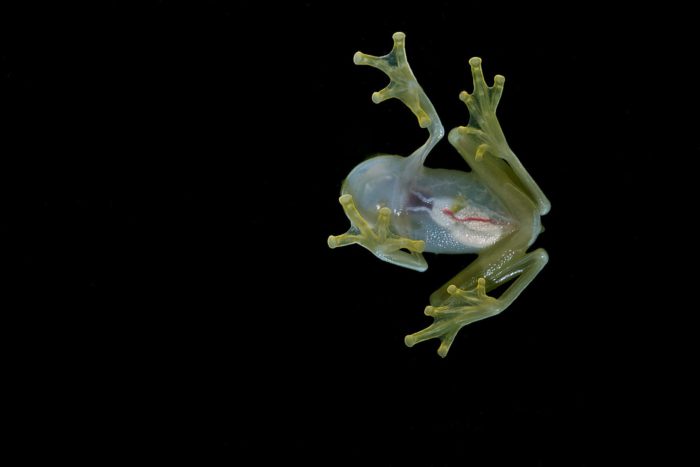- Zoology
- Daily Critter Facts
- For Teachers
- Study Guides
- Diseases & Parasites
- Contact

Have you ever heard of glass frogs? Despite their small size and translucent appearance, these fascinating amphibians are garnering attention from researchers and nature enthusiasts alike. Let’s dive into the captivating world of glass frogs and unveil their secrets.
Introduction to Glass Frogs
Glass frogs, belonging to the Centrolenidae family, are predominantly found in Central and South America, inhabiting lush rainforests and tropical regions. What sets them apart from other frogs is their unique translucent skin, which allows you to see their internal organs, including the heart, liver, and intestines. This remarkable feature has earned them the nickname “glass frogs.”
The Enigmatic Anatomy
One of the most striking features of glass frogs is their translucent skin. This transparent layer provides researchers with a rare glimpse into their internal biology, allowing for detailed studies of their organs and physiological functions. It’s like having a window into the inner workings of these tiny creatures.
Life in the Canopy
Glass frogs are primarily arboreal, meaning they spend most of their lives in trees and bushes. Their translucent skin helps them blend seamlessly into their leafy surroundings, providing camouflage from predators such as birds and snakes. These frogs are expert climbers, using their sticky toe pads to grip onto branches and navigate through the dense foliage of the rainforest canopy.
Breeding Behavior
During the breeding season, male glass frogs showcase their vocal talents to attract females. Their distinctive calls resonate through the forest, signaling their availability and establishing territory. Once a female is enticed, the male will lead her to a suitable breeding site, typically near a stream or river.
The mating ritual of glass frogs is truly fascinating. After mating, the female lays her eggs on the underside of leaves that overhang the water. The translucent eggs provide protection from predators while still allowing sunlight to penetrate, promoting optimal development. Once the tadpoles hatch, they drop into the water below, where they will undergo metamorphosis into froglets.
Conservation Concerns
Despite their unique characteristics, glass frogs face numerous threats to their survival. Habitat destruction, caused by deforestation and urbanization, poses a significant risk to their populations. Pollution, climate change, and the spread of infectious diseases, like Chytrid, also contribute to their decline. Conservation efforts are crucial to safeguarding these mesmerizing creatures and preserving the delicate ecosystems they inhabit.
Conclusion
Glass frogs may be small in size, but they leave a big impression with their translucent beauty and mysterious nature. By delving into their world, we gain valuable insights into the intricate wonders of the natural world. Let’s celebrate these enchanting amphibians and work together to ensure their continued existence for generations to come.
Guest author/writer: Joshua Onyango
